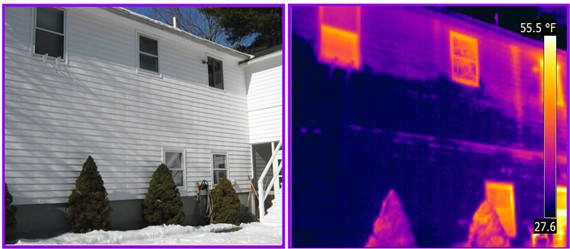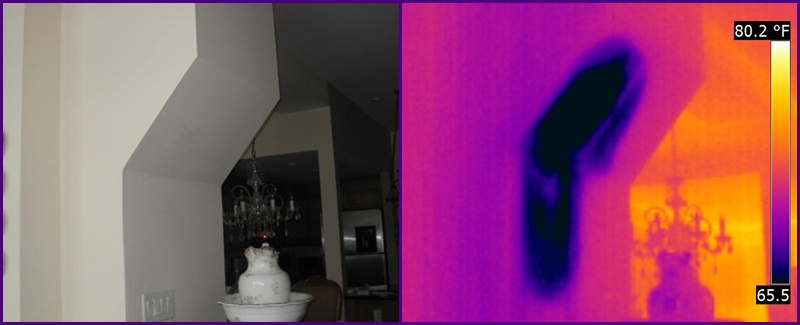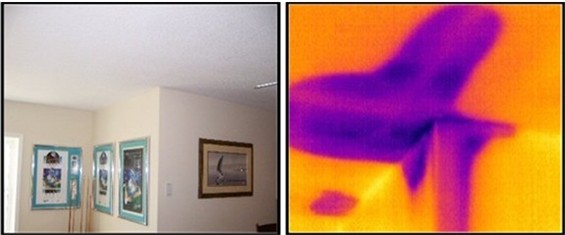Concealed Moisture Detection
See What's Really Going On!

INFRARED DETECTS CONCEALED MOISTURE BEHIND SIDING
Moisture is the primary driver of costly building upgrades today. Scanning interior surfaces can uncover excess moisture caused by roof and plumbing leaks, wall penetration issues, ice dam infiltration, window and door leaks, hidden dampness under resilient flooring, and other vulnerable areas throughout your home.
Moisture can quickly compromise the structural integrity of a building and foster mold growth within days. The first step in effective moisture remediation is to swiftly and accurately identify and eliminate all sources of moisture to prevent wood rot and mold. Using advanced detection methods, I can pinpoint the exact source and location of moisture intrusion with minimal disruption and little to no physical disassembly. This allows homeowners to avoid unnecessary demolition of walls and ceilings while efficiently addressing leaks and problem areas.

A visual inspection of this wall shows no apparent issues, but my infrared camera reveals an active roof leak above this area.

Moist areas in building materials cool as energy transfers during water evaporation. During a thermal scan, these wet, cooler spots stand out against the surrounding dry, warmer surfaces. If I detect moisture in your home, I will capture both digital and thermal images to document the findings in your infrared report.
By pinpointing the exact location of moisture buildup, I can minimize unnecessary removal of wall or ceiling coverings, ensuring that only the affected sections are addressed. Once the coverings are removed, the leak is repaired, and all wet materials are eliminated, proper drying measures must be taken before any new materials are installed. I can monitor the drying process and confirm when the damaged area is completely dry and mold-free, ensuring it's ready for reconstruction. At that point, your contractors can proceed with restoring your space to your specifications.
My infrared camera does not directly detect mold behind walls and ceilings, but it does identify conditions conducive to mold growth. When basement walls are covered with finish materials, thermal imaging can provide a definitive assessment of potential moisture issues behind them.
An infrared camera functions as an advanced diagnostic tool, displaying thermal images and temperature variations that highlight moist, cold, or warm areas where mold is likely to develop. Once a problem area is identified, a targeted invasive inspection is recommended. This precise approach allows for immediate corrective action, preventing extensive damage and mold accumulation.
You can also hire me for moisture contamination evaluations following severe floods, broken water lines, equipment failures, or even before purchasing real estate suspected of hidden moisture damage.
Hint: Don’t be misled by claims that a musty odor is simply due to a home being vacant and closed up—musty odors are a clear sign of moisture infiltration.

The ceiling appears dry, but thermal imaging reveals an active leak in this area.

For more information, please go to the top right corner and click "Navigate."